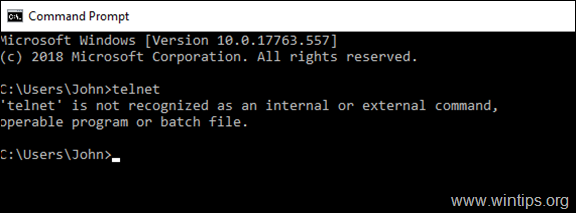

In the window that opens, select Telnet Client. To enable Telnet on Windows 10, follow these steps Open Control Panel. Enable Telnet on Windows 10 Control Panel. Takeown /f C:\Windows\System32\telnet. That said, you can still enable and use Telnet on Windows 10. Those are fine in general, but the cacls command is apparently replaced by "Icacls" There are slightly out-dated instructions here: Note that you can't by default delete exe files in System 32, even as an admin, so you need to take control of the file.
#How to use telnet windows install
Install Telnet Client using Command Prompt (cmd) To install Telnet client using cmd, open command prompt with run as administrator. There are three different ways to enable Telnet client in Windows as given below. We need to enable Telnet client before using it.

PuTTY is open source software that is available with source code and is developed and supported by a group of volunteers You can use Putty to connect to a telnet server or a SSH server. Windows will take some time to install Telnet and once it is done you can use the telnet command in CMD or you can run the telnet utility from the search. As Telnet client is disabled by default on Windows 10 or all windows version. Which one was important, but it's fairly trivial to do both.) PuTTY is an SSH and telnet client, developed originally for the Windows platform. My solution was to get a 32-bit version of the telnet exe from a 32-bit machine (in this case an old laptop running XP SP3) and put one copy in the same directory as the script and another copy over the top of the telnet.exe sitting in System32. It works similarly: gnutls-cli www. Also, Steve Langasek, the Ubuntu release manager suggests GnuTLS. Thanks Ng, one of the phenomenal Canonical sysadmins for this tip. I know that everyone involved in this thread no longer needs it, but in case someone comes a long looking for the answer (as I did) I've managed to get this working. But one gotcha when using telnet the web server would patiently wait for me to type out the request completely.


 0 kommentar(er)
0 kommentar(er)
